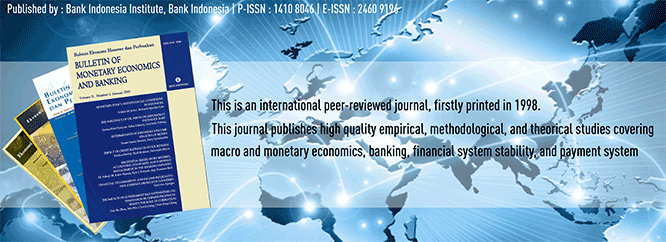
Document Type
Article
Abstract
This paper investigates the importance of financial intermediation sector in the inter-industry context, using input-output tables from 1995, 2000, 2005, and 2010. Known as matrix triangulation problem, the problem was mathematically categorized as NP-Hard where exact solution to real-world data cannot be ascertained. The algorithm used in this paper was proposed by Chanas-Kobylanski. The computation results confirm that the financial intermediation sector is consistently among the most important sector in the production structure of the Indonesian economy by serving non-negligible input to most sectors inthe economy. This paper shows that the sector has mixed record toward small-scale businesses. Financial intermediation sector supports directly and indirectly retail trade, agricultural and food-beverages sectors. The relatively large share of input from financial sector implies the high interest rate charged by banks to the retail trade sector, which in turn reflects high risk associated with Retail Trade (and SMEs in general). Thus tightening and improving efficiency between financial intermediation and retail trade sector will not only increase SMEs participation in the economy but also improve the economic activities in the agricultural and food-beverages sectors which combined contributes to around 19 percent of Indonesia’s GDP.
Recommended Citation
Panggabean, Martin
(2017)
"FINANCIAL INTERMEDIATION SECTOR IN INDONESIA’S PRODUCTION PYRAMID,"
Bulletin of Monetary Economics and Banking: Vol. 19:
No.
4, Article 4.
DOI: https://doi.org/10.21098/bemp.v19i4.693
Available at:
https://bulletin.bmeb-bi.org/bmeb/vol19/iss4/4
First Page
385
Last Page
402
Creative Commons License

This work is licensed under a Creative Commons Attribution-NonCommercial 4.0 International License
Country
Indonesia
Affiliation
Institute Technology Bandung







